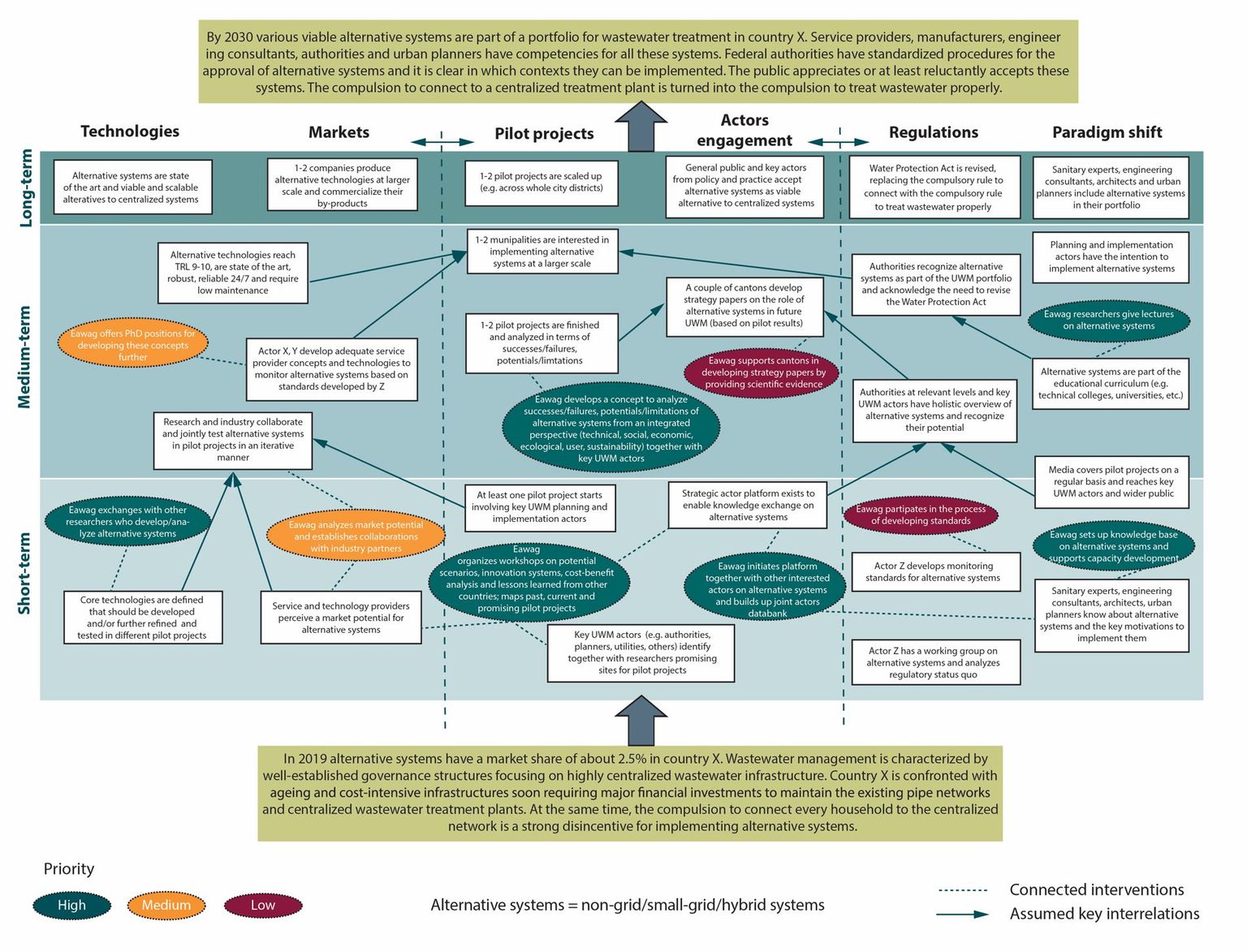Developing Theories of Change for supporting transformations in the urban water sector
Lessons learned from an inter- and transdisciplinary research program
Application context – the inter- and transdisciplinary program Wings
Wings (Water and sanitation innovations for non-grid solutions) is a strategic inter- and transdisciplinary research program, initiated in 2016 at Eawag – the Swiss Federal Institute of Aquatic Science and Technology. This ten-year program strives to develop novel non-grid and resource-oriented wastewater systems that can function as comparable alternatives to ‘conventional’ network-based systems. This is done by conducting research in different socio-economic contexts (Switzerland, USA, India, Kenya) and from several disciplinary perspectives (engineering, transition studies, urban planning, environmental psychology, etc.). The program thereby builds on past and current research projects from four Eawag departments (Process Engineering; Urban Water Management; Environmental Social Sciences; and Sanitation, Water and Solid Waste for Development) and integrates them into a single program. Individual research projects are funded by different agencies and are implemented in collaboration with actors from research, policy and practice. The program team includes department heads, directorate members, research group leaders, PostDocs, PhDs and scientific assistants (approx. 15-20 people). An overview of the program structure, including research pillars, transversal projects and program lead, is depicted in Figure 1. The four research pillars represent four different socio-technical system configurations in different socio-economic contexts. Each pillar involves several research projects. The transversal projects aim to bundle the methodological and conceptual needs across the different pillars.
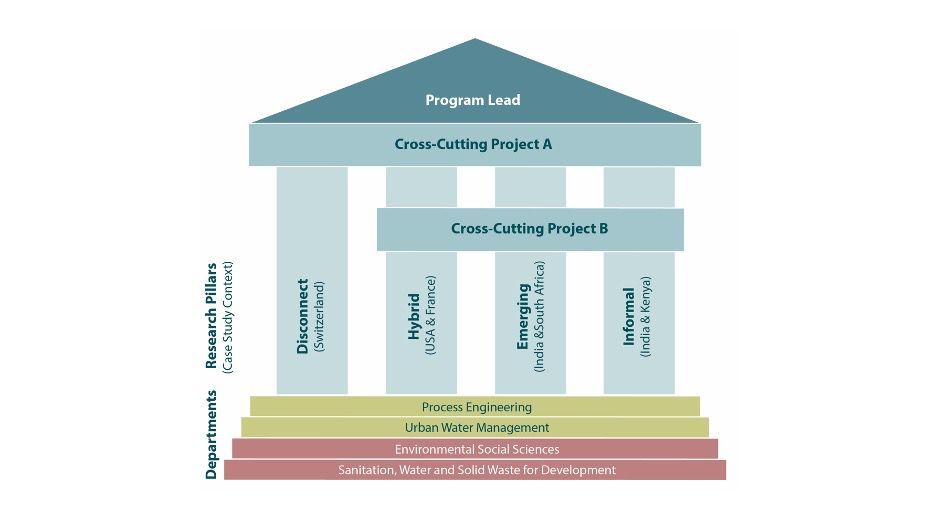
Why we decided to develop Theories of Change (ToCs)
As leaders of Wings and in charge of advancing integration within the program, we applied the tool to support our interdisciplinary research team in the following five key areas:
- Visioning: creating the ‘bigger picture’ about change processes in the urban water sector in different contexts
- Planning: defining the program’s contributions to these processes and identifying specific interventions in the short, medium and long term
- Monitoring and evaluation: monitoring change processes in the urban water sector and evaluating the outcomes of the interventions defined at pillar and program level
- Reflection and learning: facilitating continuous reflection and learning about change processes in the course of the program
- Fostering interdisciplinarity: strengthening interdisciplinary communication, collaboration and integration across all academic positions, departments and projects involved
Final outputs
- 1 Theory of Change on program level
- 4 Theories of Change on pillar level (1 ToC per pillar)
- 13 Theories of Change of one intervention (e.g. workshop, policy brief, etc.) on the project level
Steps in the ToC development process
We developed ToCs on the project, pillar and program level. For each level, we applied a different approach. In the following, we present the ToC development process on the pillar level as we assume it yields the most helpful insights for other projects and programs. In addition, it was the most time-intensive and, from our perspective, the most valuable approach in terms of the interdisciplinary discussions that emerged. The other two approaches can be consulted in more detail in our publication (see Deutsch et al. 2021). In order to develop theories of change on the pillar level, we conducted several workshops, and thereby alternated group compositions (e.g. only junior researchers, or junior and senior researchers mixed; on average 3-6 participants) and applied the following steps:
Step 1 – Defining an impact statement: The impact statement expresses a common vision and the overarching goal the program aims to contribute to by collaborating with other actors from research, policy and practice. Although the strategic program ends in 2025, the program team formulated an ambitious, yet realistic and concrete goal for 2030.
Step 2 – Conducting an actor analysis: The team identified and classified eight to ten actors as either ‘movers’ (in favor of the intended change), ‘floaters’ (undecided/no clear position) and ‘blockers’ (clear position against the envisioned change). It also discussed the interest of each actor and estimated their influence in realizing this change (based on Retolaza Eguren, 2011).
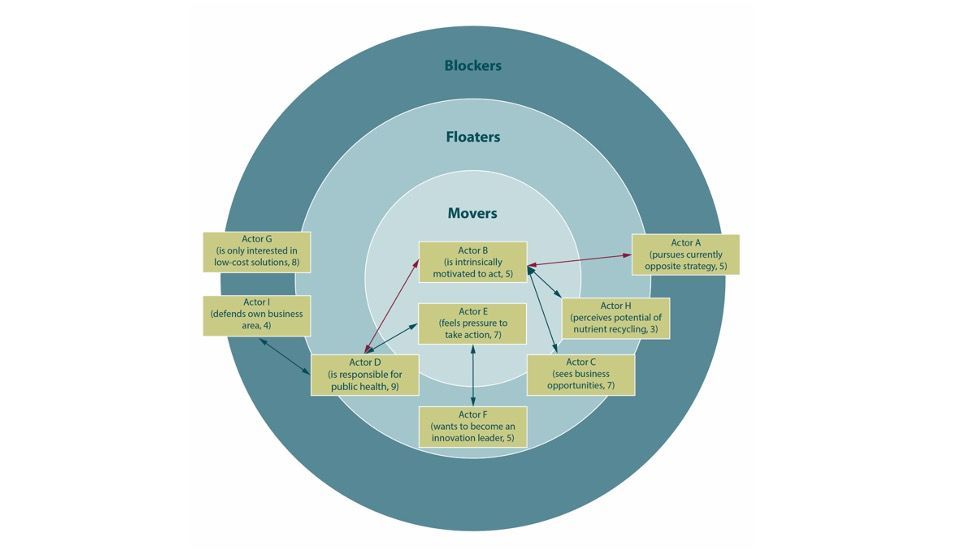
Step 3 – Doing back-casting: Based on the impact statement and actor analysis, the team defined necessary long-, medium-, and short-term changes, that need to be in place for the overall common vision to be achieved, and documented and compiled assumptions and uncertainties underlying such changes.
Step 4 – Brainstorming interventions: The team identified new and already ongoing or planned interventions (e.g. organizing workshops, setting up a network, developing a policy-brief, conducting research, etc.), which can support the necessary long-, medium-, and short-term changes
Step 5 – Discussing results and identifying gaps: The draft Theory of Change was presented to the wider program team during the monthly program meeting. Based on this discussion, the team identified relevant gaps, formulated respective interventions to address these gaps and collected emerging underlying assumptions and uncertainties about change in the urban water sector.
Material used: To facilitate the process, we used sticky notes, pin boards, recording devices and guiding questions from different ToC guidelines (see further reading). We recorded all workshops and meetings, subsequently transcribed them and then extracted further implicit assumptions and topics for discussions from the transcripts for ensuing discussions.
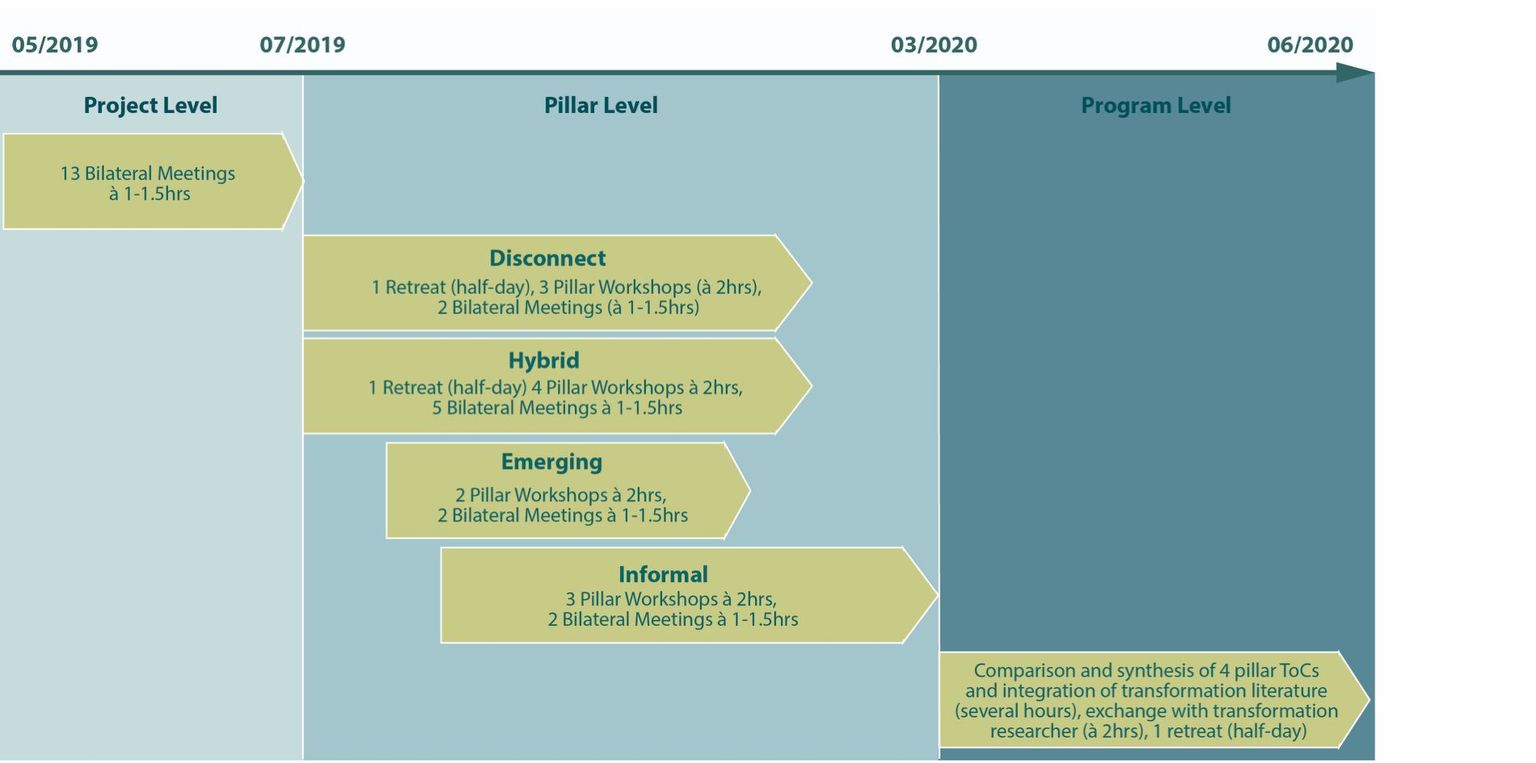
Challenges
We identified the following 5 main challenges:
- Managing time while dealing with differing perspectives
- Balancing between concrete and abstract discussions
- Ensuring rich discussions while balancing comfort and discomfort
- Obtaining buy-in and overcoming reservations
- Fulfilling both service and science roles of ITD
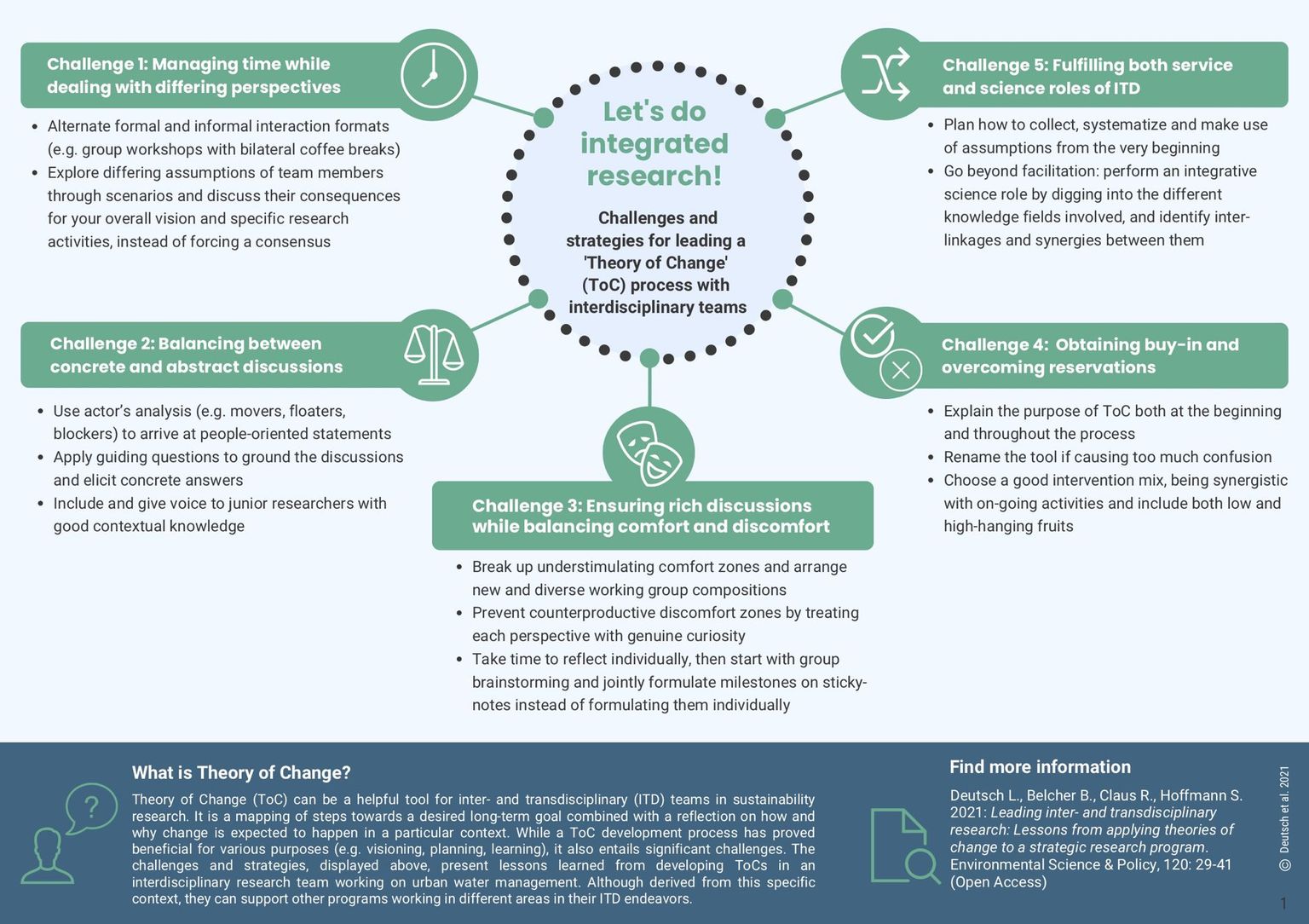
Open questions and outlook
- Reflecting on ToC ‘ownership’ as the process was strongly pushed by program leaders
- Contrasting the interdisciplinary ToC with perspectives from industry, policy and practice
- Exploring how the ToC can be combined with other tools (e.g. scenario techniques)
